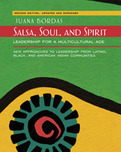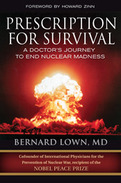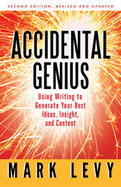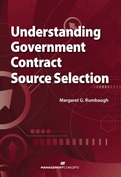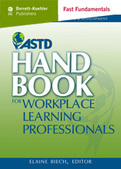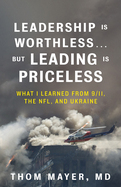A much-needed revised edition of the only book that presents a multicultural leadership model integrating eight practices from African-American, American Indian, and Latino communities—an alternative to the heavily or exclusively Anglo-American based concepts of leadership presented by most leadership books. The first edition has sold 20,000 copies, was the winner of the International Latino Book Award, Best Business Book, and was on the Rocky Mountain News Bestseller list. NEW EDITION, REVISED AND UPDATED
One of America's historic strengths is the ability to incorporate aspects from many different cultures to create a stronger whole. Our music, literature, sports, architecture, food, and fashion have all benefitted. But current leadership approaches are overwhelmingly written by White males and remain distressingly Eurocentric. Juana Bordas has set out to change this. In this influential book, she shows how incorporating Latino, Black, and American Indian approaches can enrich leadership and offers a more viable model for our expanding multicultural society.
-
Identifies nine core leadership principles common to Latino, African American, and American Indian cultures
-
Incorporates these principles into a multicultural leadership model that is uniquely suited to our changing demographics
-
Combines personal reflections, interviews with community leaders, historical background, and contemporary case examples
One of America's historic strengths has been our ability to incorporate aspects from many different cultures to create a stronger whole. Our music, literature, language, architecture, food, fashion, and more have all benefitted. But leadership approaches have remained distressingly Eurocentric.
Juana Bordas set out to change this in the first edition of this influential book. She showed that incorporating Latino, African American, and American Indian approaches to leadership into the mainstream can strengthen leadership practices and better inspire today's ethnically rich workforce.
This message has only become more urgent. The 2010 census revealed that in four decades minorities will constitute over 50 percent of the populationand in one decade a majority of Americans under age eighteen will be nonwhite. More than ever we need a leadership model htat resonates with our country's growing diversity. Bordas incorporates this latest census data into this second edition, which now identifies ninerather than the previous edition's eightcore leadership principles common to all three cultures. The new principle deals with intergenerational leadership, of vital importance now that many organiziations will have four generations working side by side.
Using a lively blend of personal reflections, interviews with leaders from each community, historical background, and insightful analysis, Bordas illustrates the creative ways these principles have been put into practice in communities of color. The multicultural leadership model developed in this book offers a more flexible and inclusive way to lead and a new vision of the role of the leader in organizations and in our increasingly multicultural world.
· A dramatic memoir by a Nobel Prize winner and medical pioneer
· Shows that the nuclear threat, which is still very much with us, can be successfully opposed by citizen action
· Analyzes what really drove the Cold War and what continues to drive nuclear proliferation today
“How close we came to extinction, and it is forgotten now.” So begins Nobel Prize-winner Bernard Lown’s story of his fight against the nuclear symptom of what he calls “the disease of militarism.” It is still active and highly contagious, as witnessed by events in Iran, North Korea, Pakistan, and all too many other places. And it can only be stopped, as this extraordinary memoir vividly demonstrates, by concerned citizens working together.
In 1981, brimming with anxiety about the escalating nuclear confrontation with the Russians, Lown launched a USA-USSR antinuclear movement with Soviet cardiologist Evgeni Chazov: The International Physicians for the Prevention of Nuclear War (IPPNW). Over the next four years Lown and Chazov recruited more than 150,000 doctors worldwide to join their movement, held international conferences that included U. S. and Russian military leaders, met with numerous world political leaders, and appeared on television programs broadcast throughout the USSR and the U. S. In 1985, despite active opposition from the U. S. government and NATO, Lown and Chazov accepted the Nobel Peace Prize on behalf of IPPNW.
This dramatic story is told with a vibrancy of language that illuminates dramatic scenes such as Lown convincing King Hussein of Jordan to join the anti-nuclear struggle during a medical exam, the heart attack of a Russian journalist at an IPPNW press conference, and Lown’s face-to-face conversations with Gorbachev. Although this book is concerned with a potential clash of superpowers, Lown writes, “At the heart of these cascading events is a human narrative.”
“Historical amnesia is a prelude for repeated victimization,” Lown says. Prescription for Survival probes the past to help us understand what drove, and continues to drive, nuclear proliferation, and offers a blueprint showing how we can join together across national boundaries to end it.
2010
But what happens when we encounter problems where such conventional thinking fails us? How do we get unstuck?
For Mark Levy, the answer is freewriting, a technique he's used for years to solve all types of business problems and generate ideas for books, articles, and blog posts.
Freewriting is deceptively simple: start writing as fast as you can, for as long as you can, about a subject you care deeply about, while ignoring the standard rules of grammar and spelling. Your internal editor won't be able to keep up with your output—you'll generate breakthrough ideas and solutions that you couldn't have created any other way.
Levy shares his six secrets to freewriting as well as fifteen problem-solving and creativity-stimulating principles you can use if you need more firepower—seven of which are new to this edition. Also new to this edition: an extensive section on how to refine your raw freewriting into something you can share with the world.
From planning to protest and all the steps in between, Understanding Government Contract Source Selection is the one reference all government acquisition professionals and contractors should keep close at hand. This valuable resource provides straightforward guidance to ensure you develop a firm foundation in government contract source selection.
Government acquisition professionals can reference this book for guidance on:
• Preparing the acquisition and source selection plans
• Drafting evaluation criteria and proposal preparation instructions
• Creating a scoring plan and rating method
• Drafting the RFP and SOW
• Conducting a pre-proposal conference
• Preparing to receive proposals and training evaluators
• Evaluating technical, management, and cost proposals
• Avoiding protest
Contractors can reference this book for guidance on:
• Selling to the federal government
• Reviewing a draft RFP and providing comments
• Participating in a pre-proposal conference
• Preparing a proposal that complies with RFP requirements
• Developing a strategy for teaming agreements, subcontracts, and key personnel
• Negotiating a contract
• Getting the most out of post-award debriefings
• Filing a protest
PLUS! Understanding Government Contract Source Selection provides a source selection glossary, an extensive case study, and sample proposal preparation instructions in the appendices to help you navigate the federal competitive source selection process. This complete guide is an indispensable resource for anyone striving to build their knowledge of government contract source selection!


